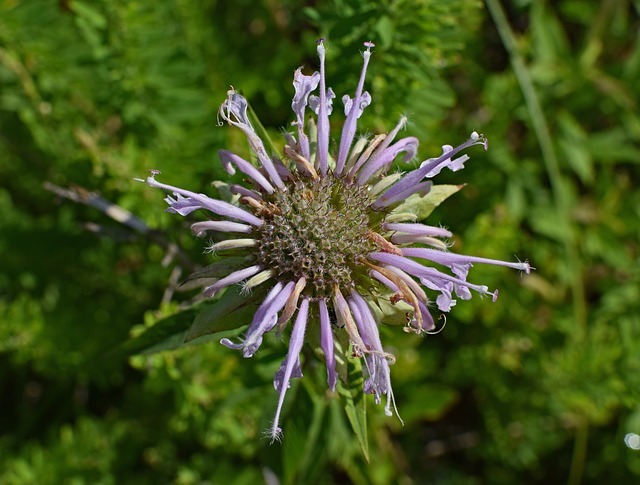The crowning glory in the garden is the wildlife within
Wild Bergamot is one of those Native Herbs that attracts Bees, Butterflies, and Hummingbirds. It has been my goal to fill the garden with natives to create a natural habitat and add more diversity.
We shouldn’t be shy about including herbs in our gardens. Many offer fantastic blooms and are beneficial for many reasons for the health of an organic garden.
Wild Bergamot (Monarda Fistulosa) also goes by the names Bee Balm, Oswego Tea, and Horse Mint. It is pink in color and sometimes almost looks a bit lavender as you can see from the ones in my garden.
As well as the wildlife Bee Balm attracts, it also assists me as a companion plant for my heirloom tomatoes. The herb seems to enhance the tomatoes growth and I plant them directly in the raised beds together.
I suspect the blooms may also be attracting the tiny little Tachinid Flies that assist me by laying its eggs in the Tomato Hornworms. The Hornworm will munch down a tomato plant real quick and causes a loss in foliage and fruit. I appreciate the Tachinids help in saving me the trouble of having to hand pick them off my tomatoes.
Wild Bergamot and tomatoes really make the perfect pair as they seem to enjoy the same soil, light and water conditions together. Keep them in well-draining soil that retains water down deep where the roots will stretch to reach the moisture. You will always have success when you pair your plants with others that have the same requirements.
Wild Bergamot is really a fun herb with an age-old history that reaches back to the Native Americans Indians. I always say if you want to learn about how to use an herb, study the Indians. They really perfected a whole host of ways to use herbs, whether for medicine or food.
The Pueblo and Zuni tribes called it Sonoran and used the leaves dried to give food a peppery oregano flavor. I like to mince the leaves fresh and add them to pasta salads and french bread.
The flower petals and the leaves were used by the Native Americans to make a tea for medicinal purposes to help treat colds, fevers, and nausea. The tea really tastes very similar to Earl Grey Tea with a slightly spicy mint flavor.
The other variety of Bergamot is the (Monarda didyma) and they have scarlet red blooms that have a citrus orange flavor. The Monarda didyma is the true Oswego Indian Tea that became the tea of choice during the Revolutionary War as the colonists protested during the Boston Tea Party events. Both varieties have great flavor and attract an endless amount of wildlife throughout the summer.
I look forward to the Hummingbirds migration as they begin to head back south later this summer and will be sure not to harvest all the blooms for tea. I’m sure they will be hungry and I want them to visit my garden for my grandchildren to see.
What more could you ask of Wild Bergamot that offers so much for everyone? I think every garden should have some. Bergamot is very easy to propagate in the fall by simply dividing it up. Its been a very faithful perennial that comes back every spring.
Even though our winters are usually mild in Southeast Texas and the plants will still retain some green foliage during the cooler months, I like to cut it back in late fall. This will make a fuller and bushier plant in the spring. So grow some herbs for wildlife and some for you too. Happy Gardening!
- Wild Dagga Motherwort Medicinal Herb - November 11, 2013
- Grow The Best Organic Lettuce - November 4, 2013
- Amish Hot Pepper Mustard - October 23, 2013



One thought on “Herbs For Wildlife – Wild Bergamot”